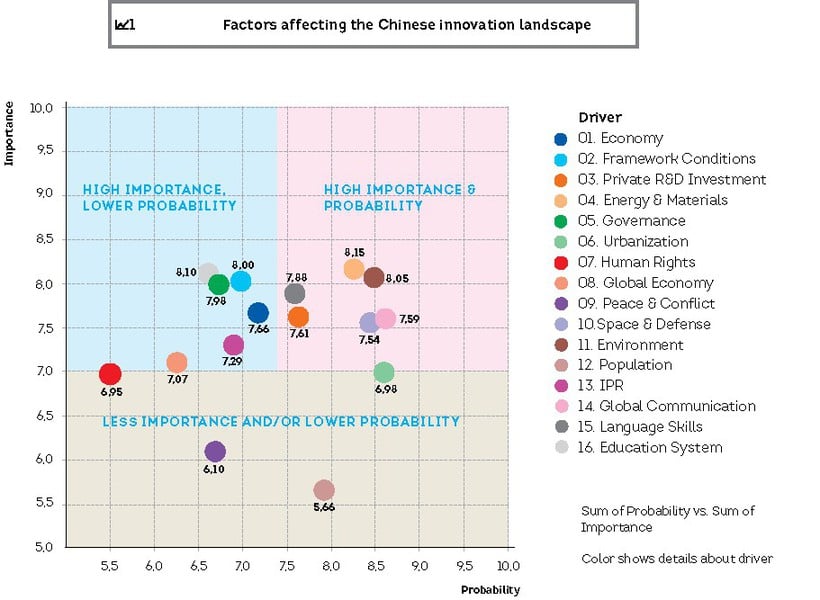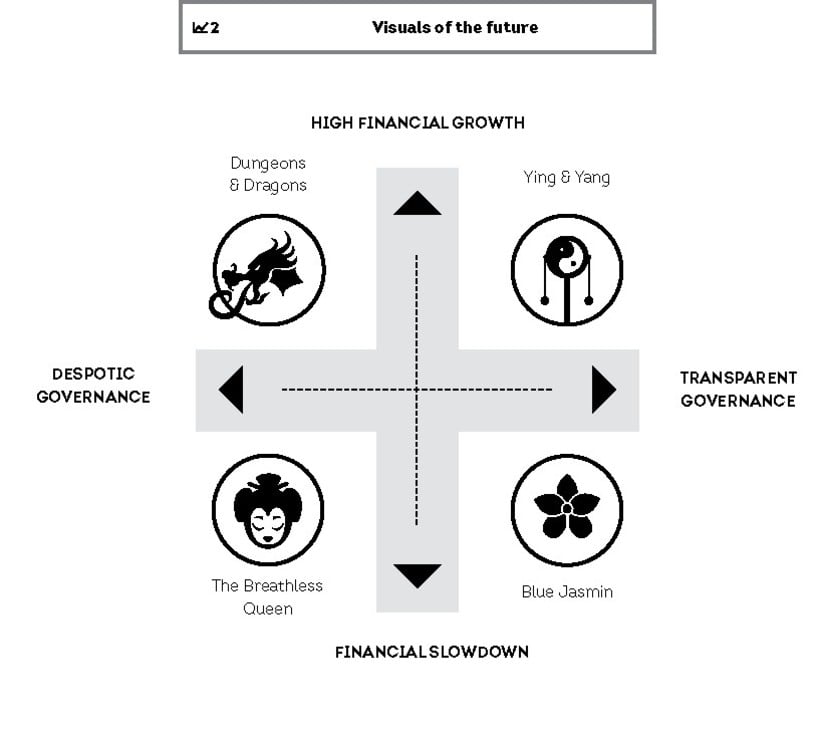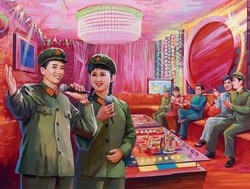Change Is the Only Constant!
We are living in a rapidly changing and complex environment that drastically transforms many of the widely accepted standards we have taken for granted over previous decades. Today, better than ever before, the words of the Greek philosopher Heraclitus describe the complex system that we inhabit. Yet, the main difference nowadays is that the pace of changes and domino side effects are enormous, mainly due to modern technologies.In this world, China seems to be the most fashionable example of a whole nation’s quick transformation. Indeed, 15 years ago, this article would have been written on American laptops, probably designed and engineered by IBM, while we would be collaborating on mobile phones ‘Made in Europe.’ However, the company that changed the PC market sold its manufacturing arm to Lenovo in 2004. At the same time, Nokia and Ericsson cellular phones have practically disappeared, while Huawei, Xiaomi, and Lenovo are gaining increasing market shares in the smartphone market. So, here we are today, typing and communicating using computers and mobile phones ‘Made in China,’ another signal of the rapid changes taking place globally, with China becoming a rising innovation star, driven by homemade technological innovations.
China today
The post-war era has witnessed the economic miracles of Japan and South Korea that managed to become substantial players in the global high-technology market. However, neither country had the dynamism or size to transform the global economy and to control the rules of the game. Today, in the beginning of the 21st century, two new countries, China and India, both have the prospects and the potential to shift the balance of the global economy.
Today, China is the second biggest economy after the US, and the country is expected to become the largest economy by mid-century. In addition, China became the world’s largest trading nation in 2013, overtaking the US in what Beijing described as a landmark milestone for the country.
What is more interesting, however, is an ongoing structural change to the national economy, based on a shift from low-labor manufacturing to service provision, internal consumption, and the production of high-tech products. This transformation of the Chinese economy is ongoing, and it still remains to be seen whether China will manage to become a global actor in added-value high-tech products.
Will China lead, or will it follow?
During a large part of human history, China led the world in science and technology. Yet during and after the Industrial Revolution, China slipped far behind. It is only in the last few decades that it has once again caught up. Nowadays, change is happening very fast, and according to OECD data, China is ahead of the EU for the first time time in percent of GDP spent on Research and Development. Nonetheless, the picture is complex.
In regards to the commercialization of high-tech innovative products, China, with its large growth and excess liquidity, is eager to invest in new technologies to upgrade its production systems. China, like other emerging markets, is now completing the innovation cycle by rapidly signing deals with innovative startups to quickly commercialize their new technologies at a fast tempo and scale. Yet the future – and especially the success – of Chinese research remain unclear
It’s true that China has primarily excelled at adopting foreign technologies as a ‘fast follower.’ However, in some fields, it is on the frontier of technological knowledge, and the growth of published research is extraordinary. In regards to the commercialization of high-tech innovative products, China, with its large growth and excess liquidity, is eager to invest in new technologies to upgrade its production systems. China, like other emerging markets, is now completing the innovation cycle by rapidly signing deals with innovative startups to quickly commercialize their new technologies at a fast tempo and scale. Yet the future – and especially the success – of Chinese research remain unclear.
Addressing exactly the need to understand the rapid changes in China’s research and innovation landscape and draft a suitable cooperation strategy, we have performed a foresight scenario study in the context of the DRAGON-STAR project, funded by DG Research & Innovation of the European Commission.
The overall work is structured around a main focal question: “What are the main factors that will affect the Research and Innovation (R&I) Environment in China up to 2025?” A combination of a desk-study analysis, media scanning, and a Delphi study, as well as a crowd-sourcing tool, have been utilized to define and analyze 16 critical drivers that play a substantial role in transforming China’s R&I landscape.

Furthermore, a cross-impact analysis has revealed the interplay between the different drivers, and highlighted the strong impact of both the government and the national economy, on positive or negative future developments.
During a large part of human history, China led the world in science and technology. Yet during and after the Industrial Revolution, China slipped far behind. It is only in the last few decades that it has once again caught up. Nowadays, change is happening very fast, and according to OECD data, China is ahead of the EU for the first time time in percent of GDP spent on Research and Development. Nonetheless, the picture is complex
Taking into account the main identified drivers, as well as some critical uncertainties, four plausible scenarios for the future of the Chinese research and innovation landscape have been composed. These scenarios visualize the overall results of the performed analysis, while in some cases, include some wild card events. These are low-probability but high-impact events that may radically upset current trends. For example, some wild cards for China could be a brief military conflict in the South China Sea, or a massive domino effect caused by social unrest around the country. The following four composed scenarios for China are all set in 2025 and illustrate four different but equally plausible futures:
Yin & Yang – In 2015, the Chinese government under president Xi Jinping started substantial reforms in its transparency of governance and the judicial system, involving greater public participation in local governance. The economy is flourishing, as it is now based more on internal consumption, services, and high-tech exports. China is a top global player in research, leading public and private R&D investment and claiming two Nobel Prize winners, in Chemistry and Medicine.
Blue Jasmine – In 2015, the Chinese government under president Xi Jinping started substantial reforms in its transparency of governance and the judicial system, which were further enforced by the support of a dynamic urban middle class. Mr. Jinping received popular support from the CCP and the public, and was re-elected in 2018. However, the huge public debt (of the central and regional governments) and the global ‘Rare Earth Metals Crisis of 2022’ caused the Chinese economy to stagnate. Nevertheless, Chinese research is thriving, driven by the national research system’s substantial reforms, initiated in 2017, and by many international research collaborations, especially in the fields of alternative materials, biotechnology, and health.

Dungeons & Dragons – In 2015, the Chinese government under president Xi Jinping started substantial reforms towards greater transparency and social balance. However, it proved impossible to overcome the obstacles set by a large group within the CCP, and a new president was elected in 2018, leading the country in the opposite direction. The new authoritarian governance has managed to maintain high growth rates based both on cost innovations and innovations in ICT, defense, space, and transport technologies.
The Breathless Queen – China is still a global power but with feet of clay, reminiscent of the Soviet Union of the ’80s. Shortsighted and insufficient financial reforms have nailed the growth rate below three percent, fueling several social side effects. Social unrest, led by the middle class and ethnic minorities, are creating an combustible combination in Chinese society. The old-fashioned research system has limited funds and cannot keep up with advances in the space race, energy, and biotechnology.
The four produced scenarios aim to assist us in suspending disbelief to imagine all plausible Chinese futures and how they might take place, as well as help us prepare for them. However, the scenarios are not predictions, as it is simply not possible to predict the future with certainty. Thus, we should consider them powerful tools to help us to perceive possible outcomes today and prepare successful strategies for the future.
The study was performed by the Phemonoe Lab and PRAXI/FORTH in the context of the DRAGON-STAR project, which was funded by the European Commission.












